Snowflake Tutorial – Snowflake Tutorial for Beginners [2025]
Welcome to the step-by-step Snowflake Tutorial. In this article, we will look into Snowflake on demand and provide a stepwise tutorial on how to get started.
We’ll go through everything from the fundamentals of the Snowflake to building a cloud-based data warehouse. We’ll also go through how you can use Snowflake to get the most out of your data. Thus, if you’re searching for a detailed introduction to using Snowflake, keep reading!!!
So, let’s start with the snowflake definition
What is Snowflake technology?
Snowflake Computing offers a cloud-based data warehousing solution. It provides a faster, more specific, and more versatile data warehouse.
Snowflake uses a novel SQL database system that integrates data warehousing, big data platforms, and cloud elasticity. Snowflake combines cloud data warehousing, data engineering, data lakes, and data science.
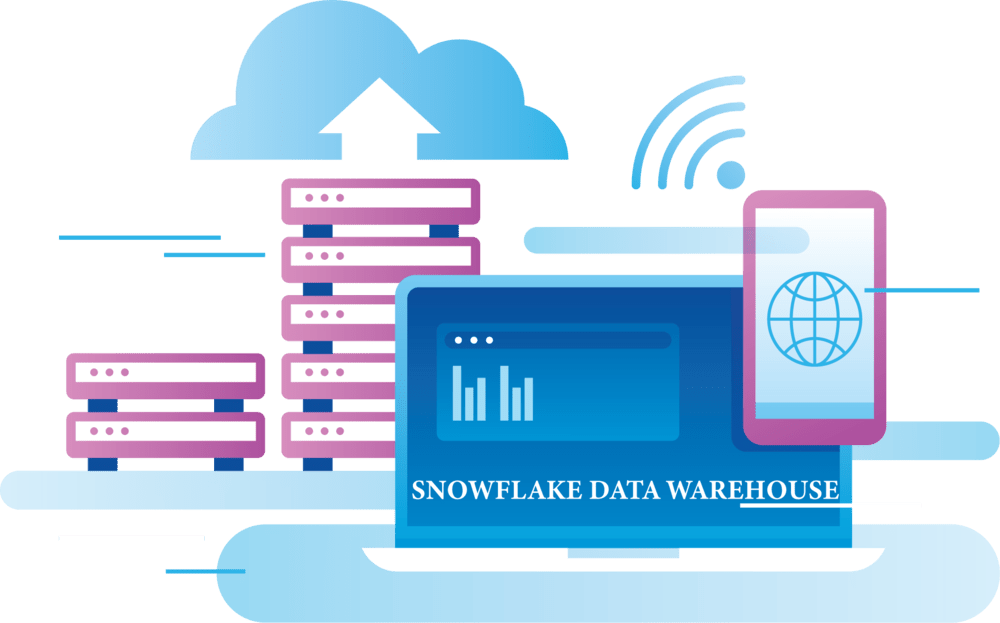
It can be used to analyze data from numerous sources and construct data pipelines, as well as to store and query data and design and deploy data models.
Organizations use Snowflake to store and analyze structured and semi-structured data, such as JSON documents.
It also includes a complete set of data security and governance features. Snowflake is used for Data Analytics, data exploration, Data Integration, machine learning, and data science, among other things.
Snowflake cloud data warehouse
Snowflake cloud data warehouse is based on ANSI SQL and uses its compression algorithm for storing data.
Snowflake allows users to Query, Analyze, and Securely store their data. It can keep on-premise, cloud, and streaming data. Its scalability lets users easily add or remove storage and compute resources.
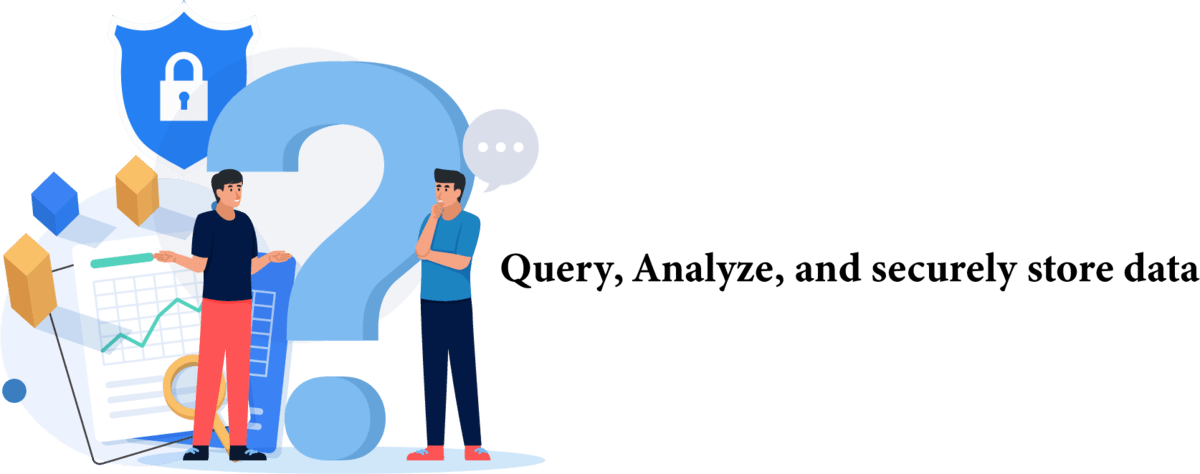
It is designed on a modern data warehouse architecture, giving various advantages over traditional on-premise data warehouses.
First, it can handle enormous data volumes and analyze data from numerous real-time sources. Its multi-cluster architecture allows customers to scale storage and processing capacity quickly.
Snowflake boosts security and privacy. Snowflake automatically encrypts critical data at rest and in transport. A cloud-stored encryption key restricts data access to authorized users.
Snowflake boosts performance. Its columnar storage architecture reduces storage costs, and its efficient query engine lets people query data quickly. Snowflake’s machine learning-based and autonomous query optimization speeds up queries.
Snowflake data warehouse features
Snowflake data warehouse features built-in data compression and compression enhancement available to all Snowflake customers. The Snowflake data warehouse saves your data in a compressed, columnar, and optimized format.
The Snowflake’s latest features employ two types of data compression:
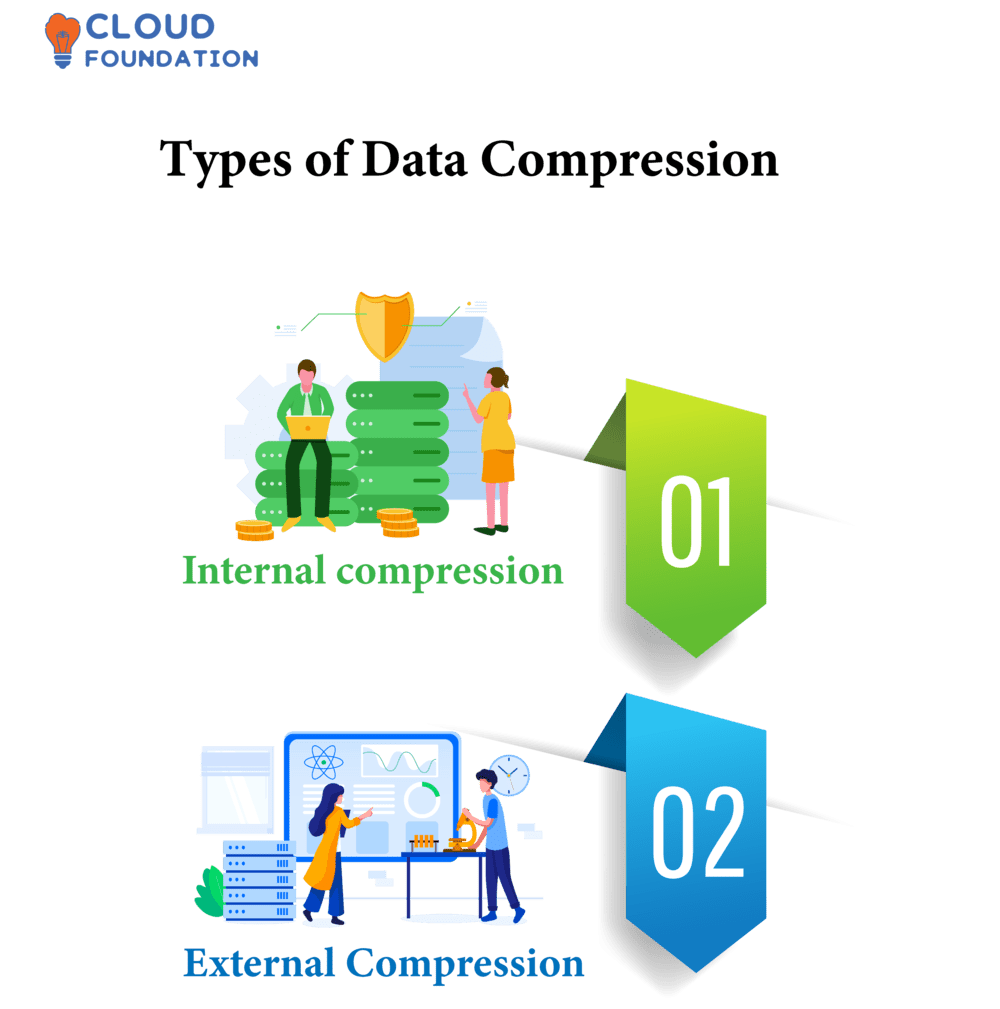
Internal compression
Internal compression used to decompress data When you enable data compression, Snowflake automatically turns on internal data compression. Snowflake detects when data needs reduction and either compresses it or requests that Cloud Services squeeze it.
External Compression
External compression is used to compress data before storing it on the cloud. It is used to decompress data Snowflake provides external compression for compressing data stored in the cloud.
When you use an external storage provider to store data in the cloud, Snowflake can compress and encrypt the data before storing it.
Its flexible and fast architecture lets customers develop and deploy data warehouses rapidly and cheaply. The Snowflake Data Warehouse PDF details its features, advantages, and architecture.
Benefits of snowflake data warehouse
There are many benefits of using the Snowflake data warehouse:

Fully managed and takes care of all bugs.
Compatible with most programming languages.
Very scalable and user-friendly.
Requires little technical knowledge.
You do not need to install or configure any hardware, and there is no software program to select, install, configure, or manage. It is entirely scalable and provides high availability.
Snowflake does not have any bugs that users have to deal with. It is also very stable and does not affect its users in any way. It is warrantable for life, so users do not need to worry about Snowflake security breaches or data loss due to software bugs. It is warrantable for life.
Snowflake data warehouse architecture
Snowflake data warehouse architecture allows you to store and analyze data. It combines a cloud data warehouse’s performance, scalability, and elasticity with an on-prem data warehouse’s safety, security, and control.
It allows you to create and use warehouse snowflake without installation, configuration, or hardware management.
Snowflake has a three-layer data Warehouse snowflake architecture, which includes:
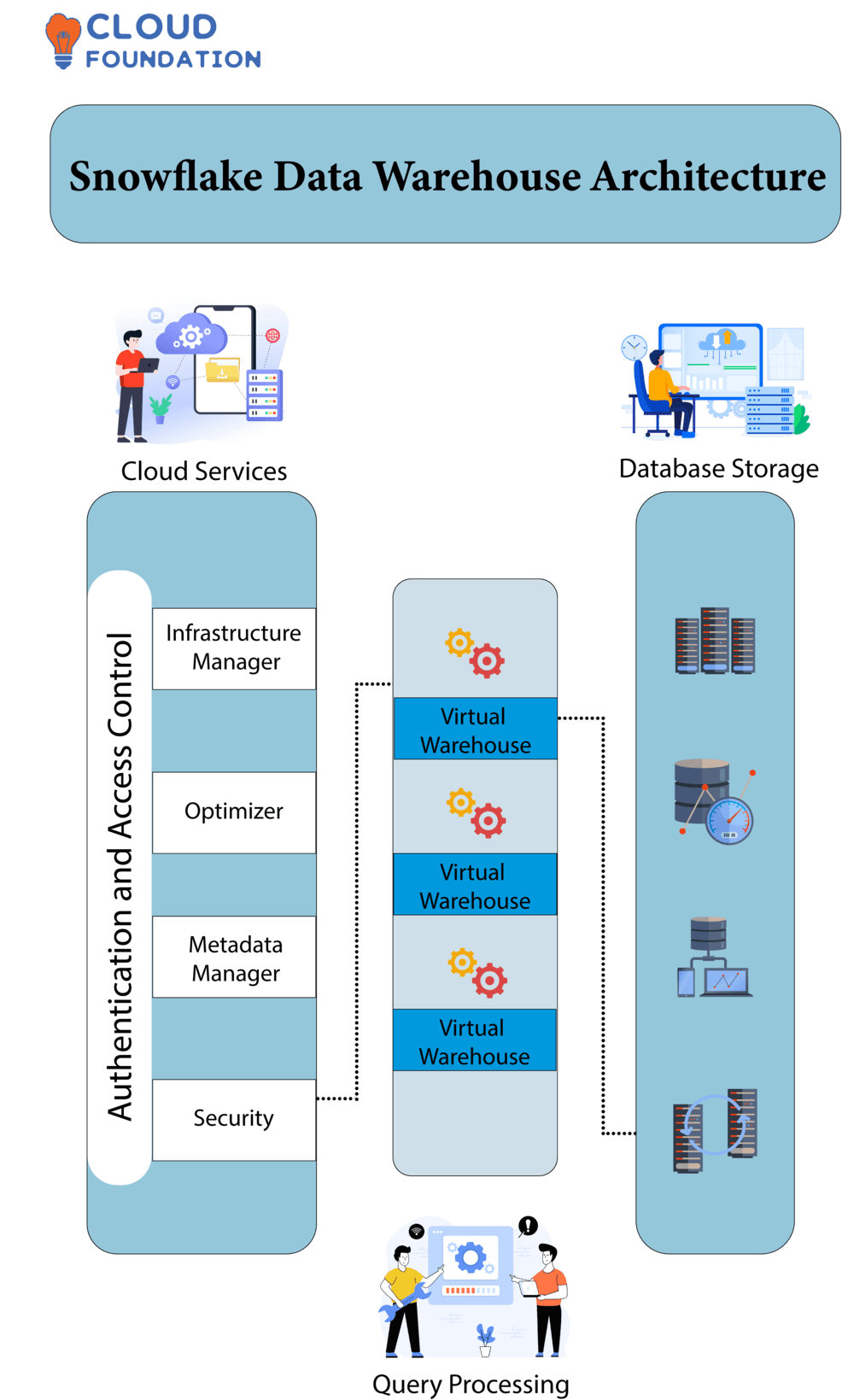
Cloud service layer:
The cloud service layer is the brain of Snowflake, Managing all the activities in Snowflake.
Query processing layer:
The query processing layer is the middle layer of Snowflake, loading data into databases, Running queries against the data.
Database storage layer:
The database storage layer is the bottom layer of Snowflake, Storing the data permanently. It is essential to recognize that the compute layer is separate from the storage layer. This is why even if many queries are running, there is no delay in accessing the data.
Snowflake’s modern data architecture allows users to extend their Cloud data warehouse Snowflake with additional functions and systems.
This Snowflake data warehouse tutorial course is designed to provide advanced skills in Snowflake data warehouse architecture. It is suitable for IT professionals who are familiar with ETL and data warehouse design and want to learn how to build scalable and secure Snowflake data warehouses.
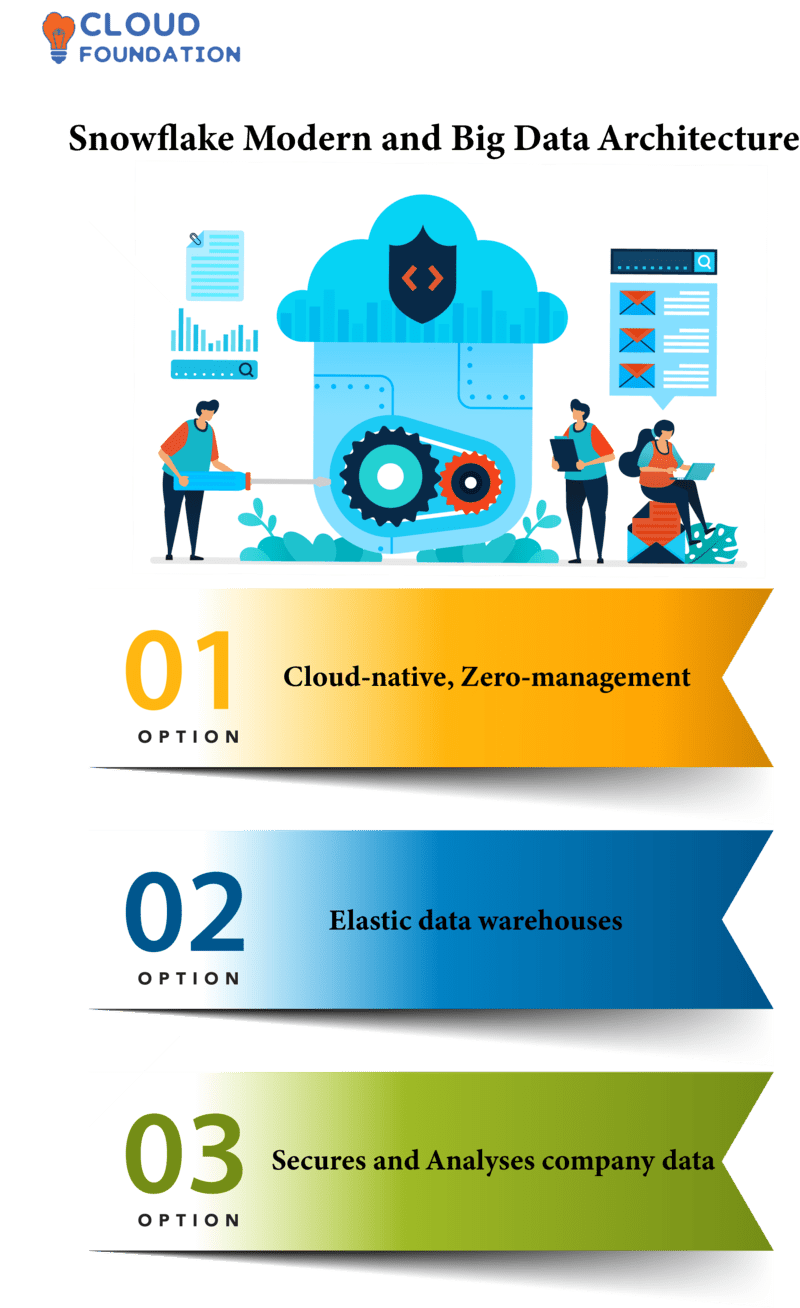
Cloud-Native and Zero-Management, and Elastic Data Warehouses all are involved in Snowflake Modern Data Architecture.
It scales swiftly, autonomously, and securely across global infrastructures using a novel SQL database engine tailored for cloud computing and a multi-cluster, shared-data architecture. Snowflake separates storage and computing for elasticity and cost-efficiency.
To store and analyze large amounts of data Snowflake big data architecture is a great choice. But what makes it distinct is its unique architecture designed for the cloud, built for data security, and engineered for speed and simplicity.
Snowflake Big Data Architecture Secures and Analyses Company Data. It is a platform that manages and analyses massive volumes of data. It provides a complete data platform with a single data warehouse, data intake, virtualization, streaming, and analytics.
Benefits of snowflake
Snowflake supports both the Relational Model and the Columnar Model of data storage.

It provides a high-security Snowflake and offers increased security. Data is highly protected with this platform.
It enables you to store and analyze vast amounts of data. Store any data. Snowflake stores data in a columnar format, which makes it easy to interpret.
Manage data of any size and shape. You can store data in any format and with any structure. It supports data stored in a compressed, columnar, and semi-structured format.
Give your business all kinds of abilities. Snowflake provides your business with all types of abilities. It can manage all data sizes.
Snowflake Fundamentals
Data is kept in a multi-cluster, massively parallel processing (MPP) architecture, columnar, and logically organized way. Data is securely and encrypted kept.
Role-Based Access Controls and data-sharing policies are used to manage data access. It offers powerful analytics and Data Transformation.
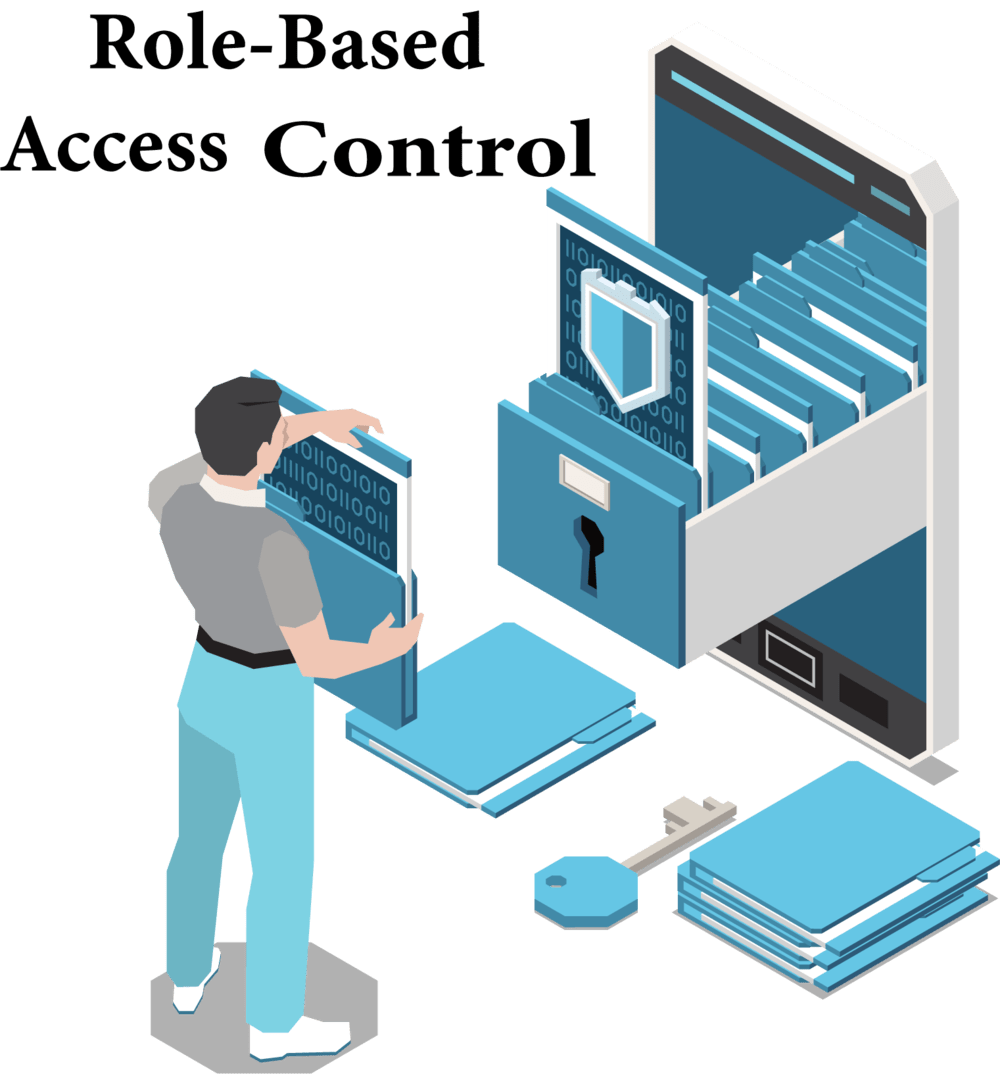
Snowflake allows businesses to execute analytics on data in the cloud and on-premises. It is a versatile and cost-effective data management and analysis tool.
It was built to grow with your company, automatic scaling, and elasticity. It also offers several Data Loading and unloading options.
Snowflake collaborates with several partner solutions for data integration, visualization, and machine learning.
Snowflake preview features
Following are the preview features of Snowflake:
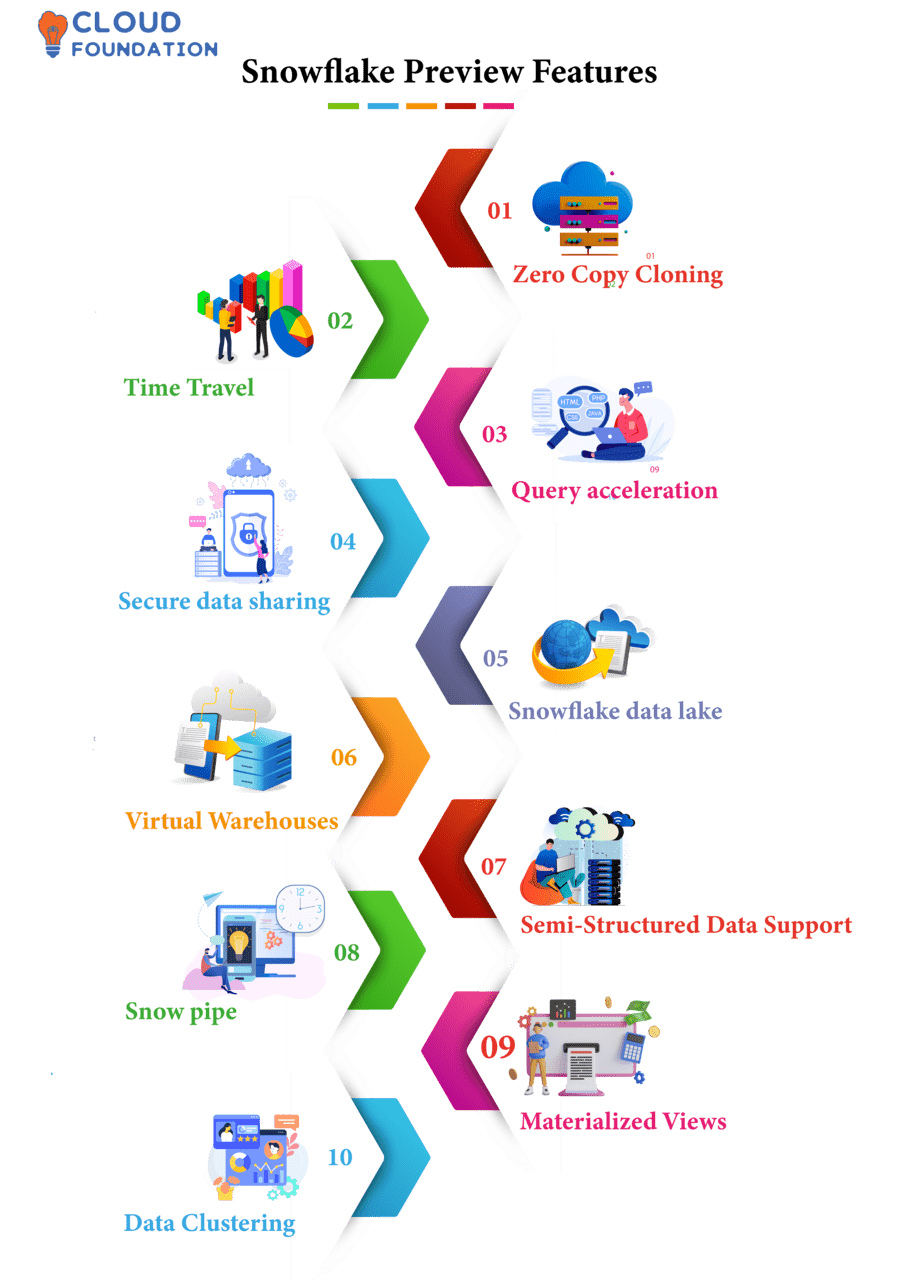
Zero Copy Cloning: With Snowflake, you can quickly and easily construct new databases and tables without additional storage charges.
Time Travel: Snowflake enables you to search through older versions of tables and databases.
Query acceleration: Snowflake offers query acceleration features to make queries run faster.
Secure data sharing enables you to safely exchange information with clients, business partners, and other users.
Snowflake data lake: Snowflake is a data lake because it can store and analyze data from various sources.
Virtual Warehouses: Snowflake offers virtual warehouses that let you increase or decrease your server capacity on demand.
Semi-Structured Data Support: Snowflake supports semi-structured data types like JSON, Avro, and XML.
Snow pipe: Snow pipe is a fully-managed service that enables you to load data into Snowflake in real time, and it comes in at number eight on our list.
Materialized Views: Materialized views let you generate pre-calculated results that can be used to speed up queries.
Data Clustering: Snowflake’s data clustering features allow faster queries and higher performance.
Snowflake Data cloud
Snowflake Data Cloud is a secure, scalable data warehouse and data lake platform for enterprises of all sizes. It simplifies and secures data analysis and reduces Data Management time and cost.
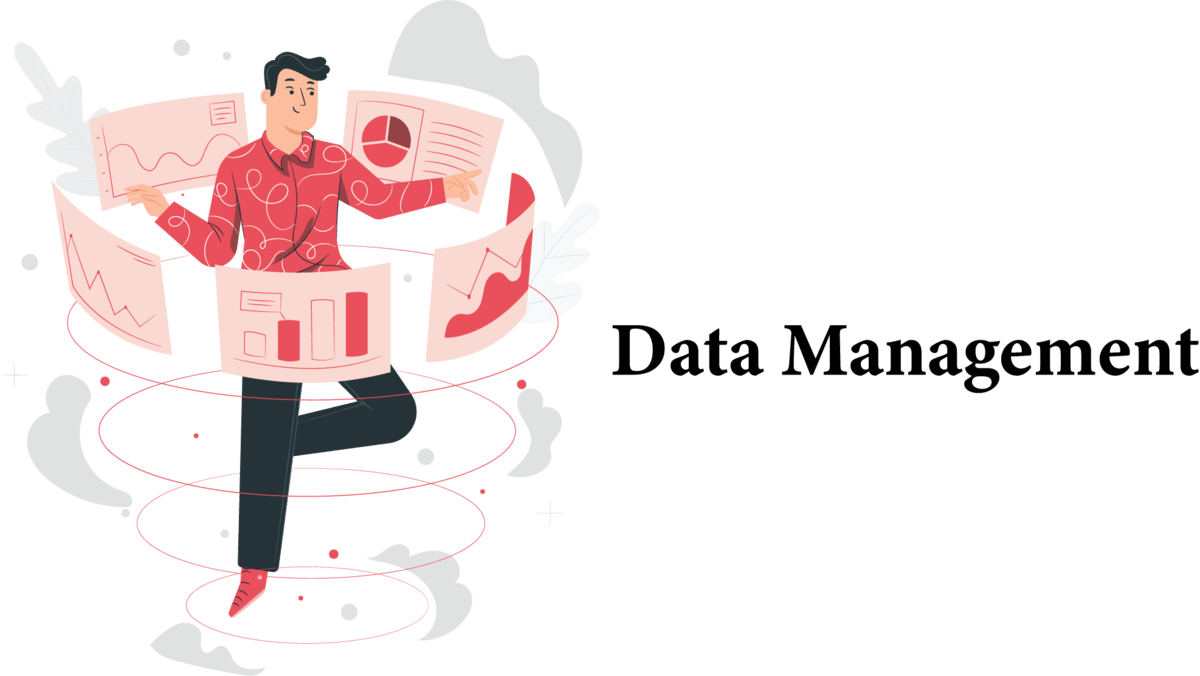
It supports zero-copy cloning, secure data sharing, Amazon Web Services, Microsoft Azure, and Google Cloud Platform.
Cloud data warehouse Snowflake, a cloud-based data warehouse, makes data storage, querying, and analysis cheaper and more accessible. It stores and analyses organized, semi-structured, and unstructured data on the cloud.
Automatic data compression, columnar storage, and query optimization help Snowflake process massive amounts of data quickly.
It offers several features that make it a compelling choice for enterprise data management. It can be used for data lakes, operational data stores, warehouses, and marts.
This snowflake cloud tutorial session will explore how to accomplish different Data Processing Applications tasks with Snowflake.
Snowflake use database
Snowflake use database cloning to ensure that your data is always available, even if a disaster strikes. The process involves taking a copy of your data at a particular time, storing it, and making it public.
This approach helps to use the database snowflake to protect the data, allowing users to access their data even if Snowflake were to go out of business or be taken down. Snowflake is a cloud-based data warehouse built on top of AWS or Azure.
This snowflake database tutorial and Snowflake database tutorial for beginners will give you a perfect start to learning everything you need about master Snowflake. It is considered the best in its operations for data warehousing platforms.
Snowflake Database Tutorial PDFs can be found on CloudFoundation. These PDFs walk users through storing, querying, and analyzing data in the Snowflake Database. They also assist you in learning about the course you are taking.
Snowflake Data Security
Snowflake Data Security is a secure, easy-to-use cloud-based data security solution. Snowflake’s security features protect cloud data and provide users with complete control over access and usage.
Snowflake security features are classified into
First, it encrypts data in transit and at rest with the newest technologies. This adds Security and Prevents Illegal Access.

Second, Snowflake’s authentication and authorization methods restrict data access. Administrators, developers, and users are authenticated. Developers can prepare data while administrators manage user access.
Third, Snowflake lets users disguise and secure sensitive data. Data masking protects credit card and Social Security information. Users can restrict access using protection.
Finally, Snowflake’s data governance controls data access and usage. This includes establishing policies and guidelines to protect data. It helps organizations audit data consumption, track trends, and spot risks.
Snowflake Documentation
Snowflake Documentation is the official resource for users. Installation, configuration, query optimization, and resource management. Each area of the Snowflake product documentation provides thorough information.
Snowflake Documentation PDF contains all online documentation. That makes it easy to access all the information when needed. Information is continually updated in the Snowflake pdf.
The developers need the Snowflake API Documentation because it details how to utilize Snowflake APIs to Access and Manage Data. It covers all the Snowflake best practices and code snippets.
Snowflake’s features and capabilities can be quickly viewed in the Snowflake Study Guide pdf. It discusses platform security, storage, performance, and scalability.
Finally, the Snowflake Tutorial Beginners is perfect for newbies. It covers Snowflake basics and the platform. It provides step-by-step instructions for database creation and querying.
By signing up for CloudFoundation, you’ll be eligible for anything the Snowflake Online Training course offers, and you can also get guidance on Snowflake Certification. It provides access to a wealth of resources for learning, including Snowflake data warehouse tutorial PDFs, free demos, Snowflake data warehouse best practices, and round-the-clock technical help.
Snowflake Unstructured Data
Snowflake is a cutting-edge data warehousing technology that securely stores and analyses structured and unstructured data. Snowflake supports JSON, XML, and other semi-structured data types in Snowflake.
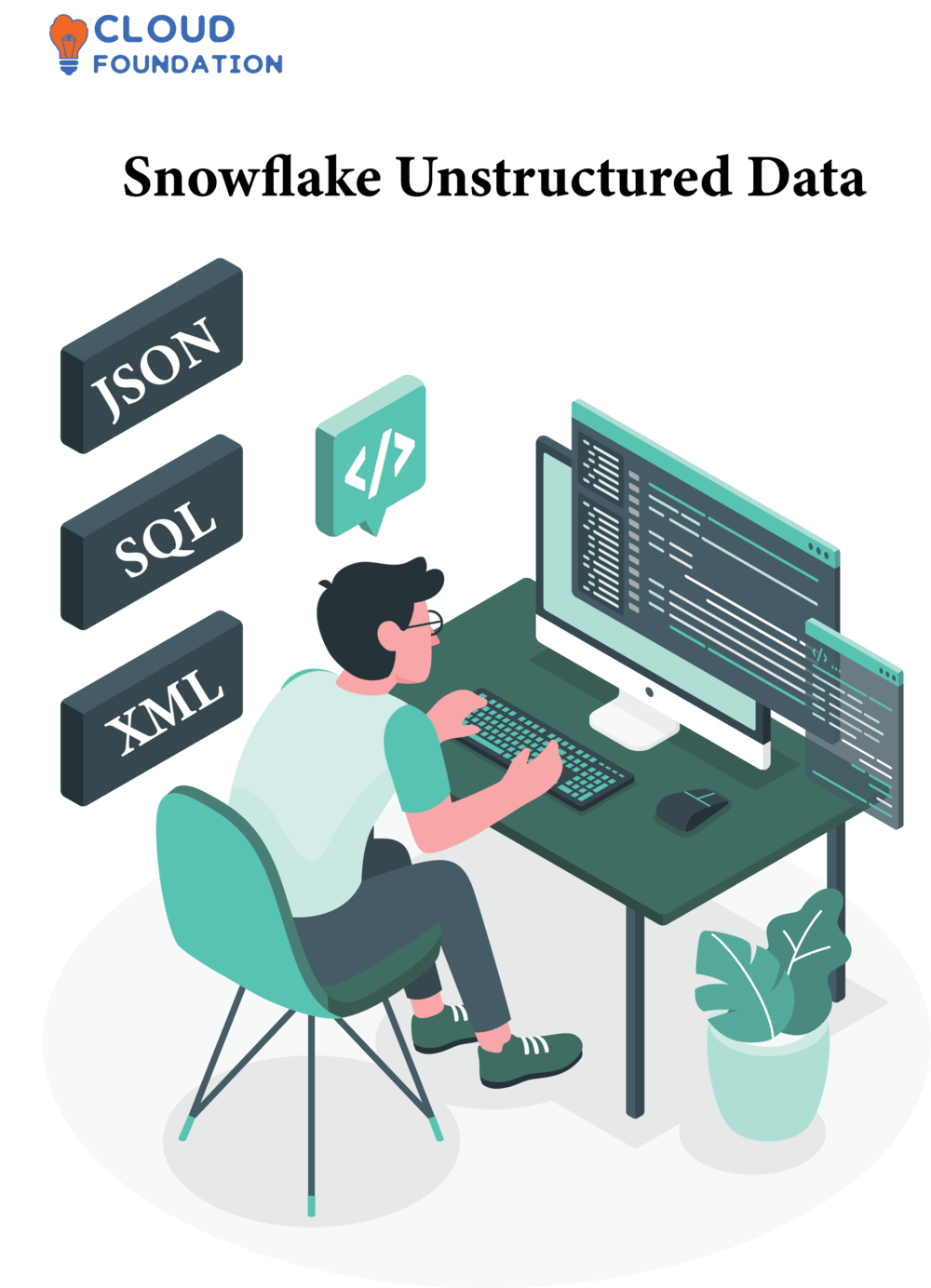
Unstructured data in Snowflake needs to be organized. Cloud-stored Snowflake files contain unstructured data such as SQL, Python, R, and Java can access these files.
Snowflake tutorial PDF for unstructured data. This document explains how to store, query, and analyze unstructured data in Snowflake.
Snowflake supports JSON, XML, and unstructured data. These data are arranged for analysis and processing.
Snowflake helps in storing and analyzing unstructured and semi-structured data. It allows anyone to work with unstructured and semi-structured data. These tutorials, Booklet, and other resources make it easy to use its unique capabilities.
Snowflake Data Exchange
Snowflake Data Exchange lets companies exchange data in the cloud. It securely connects people to many data sources and destinations and moves data swiftly.
Snowflake data Exchange Documentation covers the platform’s core features and benefits. It also includes extensive instructions for setting up and using the forum and best practices and ideas for optimizing it.
The Files explain how Snowflake Data Exchange works and how to set it up and utilize it. It also offers tips for fixing platform issues.

Check out CloudFoundation materials to maximize your Snowflake experience!!!
It offers free Snowflake Data Exchange study material PDFs. They help students and professionals learn about the Snowflake Data Exchange platform.
Data Sharing Snowflake
Snowflake data sharing enables multiple users to access the data in the same database. It provides secure data sharing for the data that needs to be accessed by various users.
Snowflake data sharing is performed in two phases:
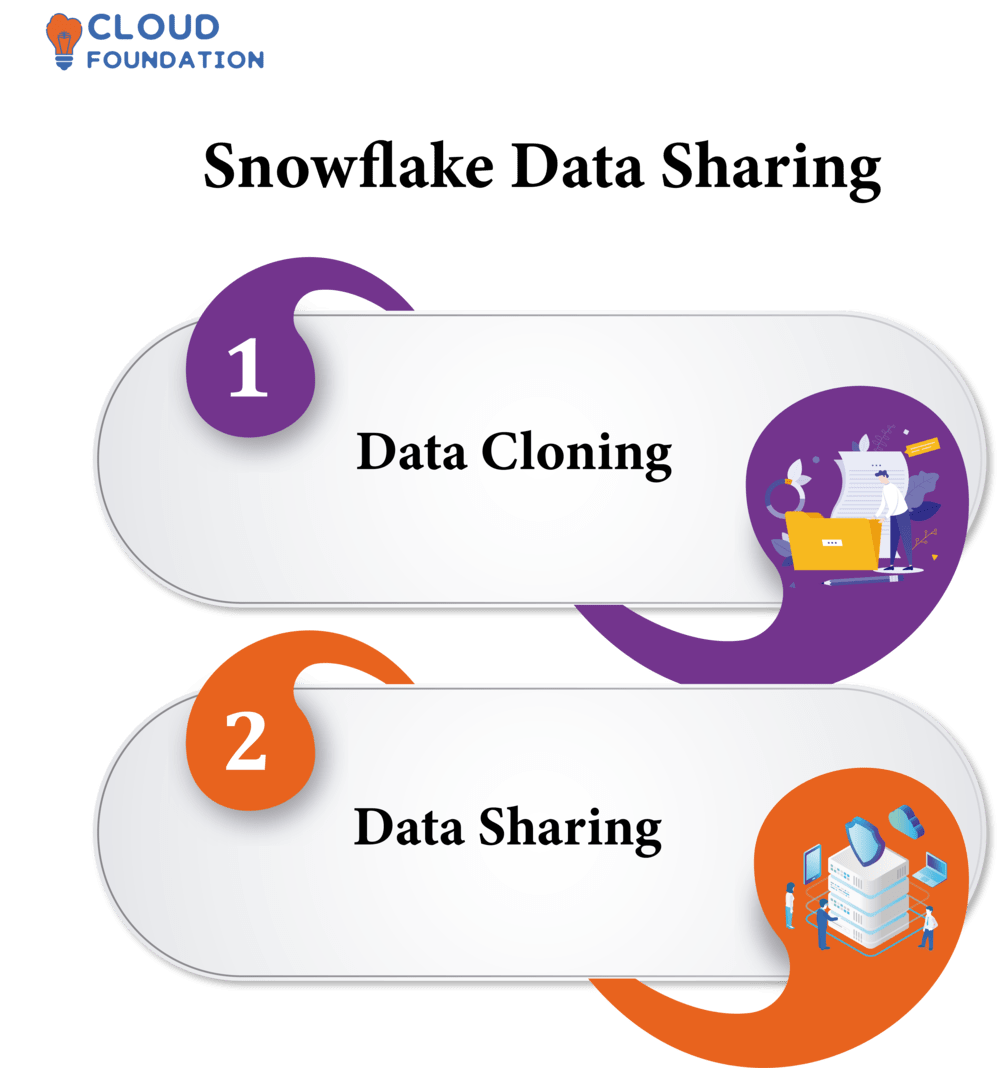
Data Cloning:
In this phase, the data cloning will create a copy of the data that can be accessed through the Snowflake.
Data Sharing:
In this phase, the users can access the shared data through the reference of the data owner.
Snowflake data sharing limitations are of types that are database and schema-only. You cannot share tables or views. Just a database or Snowflake schema can be shared. A shared database or schema cannot offer privileges to a role. Instead, everyone must have equal access. Lastly, the data-sharing user owns the database or schema regardless of who uses it.
Snowflake data-sharing documentation explains and helps users use the capability. It covers enabling and setting up data exchange, security, and management best practices. It also covers collaborating with other groups.
Snowflake Data Virtualization Abstracts Snowflake data warehouse data. Snowflake Data Validation checks data warehouse accuracy, completeness, and consistency. It safeguards warehouse data.
It unifies data sources and provides applications with a single source of truth. Applications can query, integrate, and access data from numerous sources without moving it.
Snowflake Data Platform
Snowflake data platform enables data storage and analytics without ETL Processing. It does this by using a compact, internal format that is unique to Snowflake, as well as copying data minimally. The result is fast query execution and minimal data-storage footprint.
The work with data is one of the most critical aspects of Snowflake for data science. It is essential to be familiar with different types of Data Sets, their Data Structures, and their Data Functions.
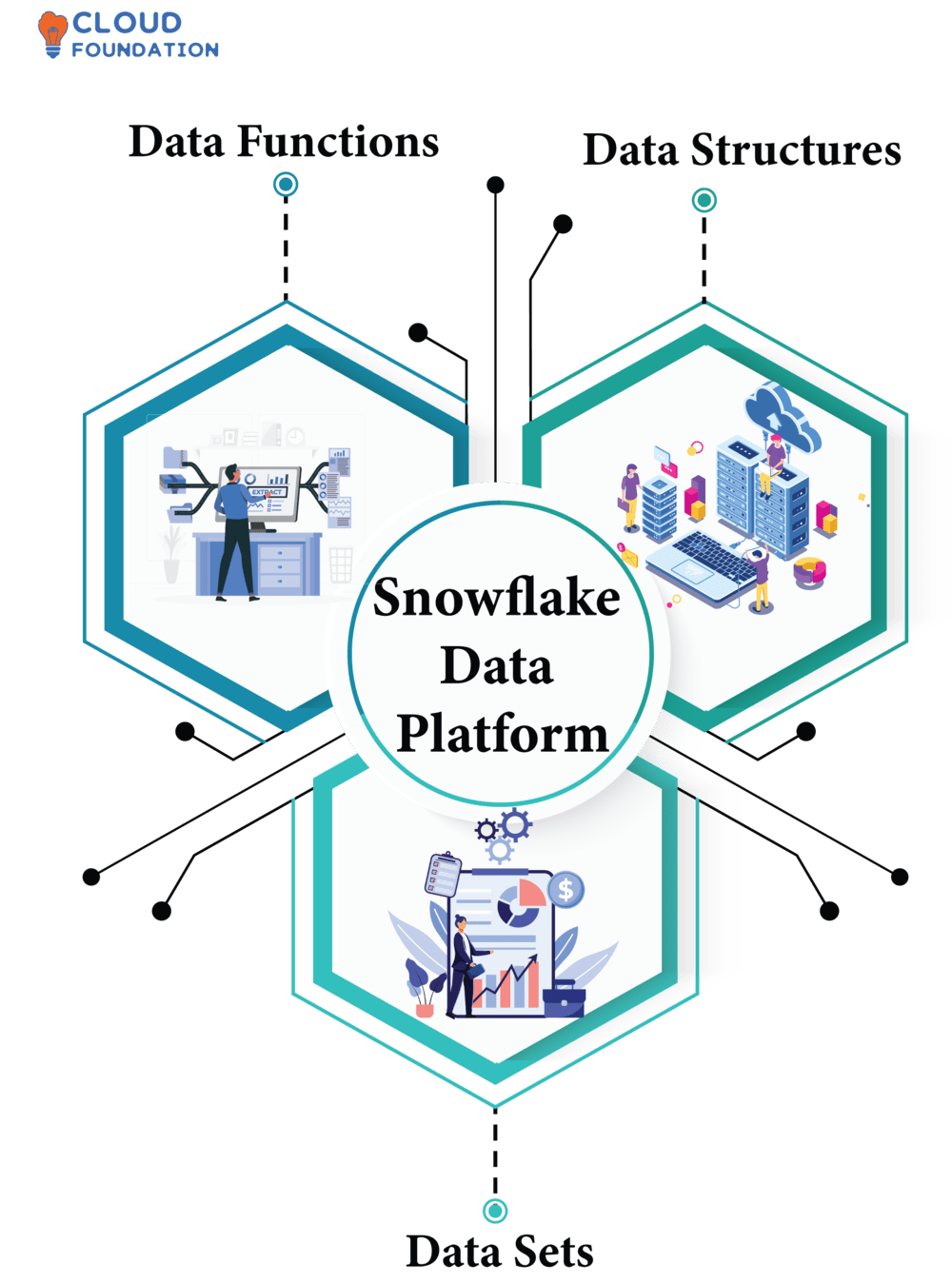
Snowflake is a cloud-based data warehouse that helps data scientists work more efficiently. Data science snowflake lets data scientists swiftly analyze, store, build, and gain insights from their data. Data scientists like Snowflake’s scalability, query speed, and low cost.
Snowflake data management platform enables data storage and warehouse services using cloud-based compute resources.
It removes the need for on-premise hardware and software, eliminating expensive infrastructure maintenance and upgrades, complex hardware configuration, and data storage and management.
Snowflake Data Transformation is a cloud-based tool that quickly and easily turns big data into insights. Users may instantly store, manipulate, and analyze data in its cloud-based warehouse.
It accesses, transforms, and visualizes data from databases, files, and cloud sources. Snowflake data transformation lets users quickly create reports, dashboards, and insights from their data.

Divya
Author
Hello all! I am gonna pop you with the information that will make your life easier.



